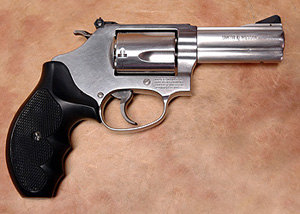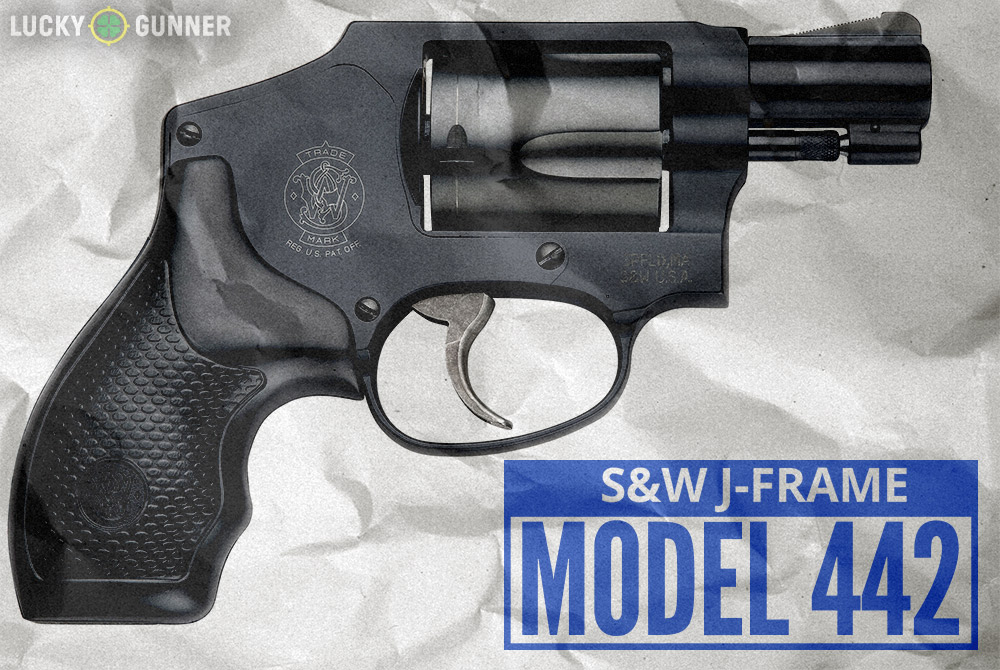
Manufacturer: Smith and Wesson Model: 66-2 Serial Number: 128k951 Barrel Length: 6. See all listings by JIMMY'S FINE GUNS Print this listing. Guns International. Serial # BSN3389 & 6589 First revolver is a Smith & Wesson Model.44 Second Model hand ejector. Features include a 5' barrel, Smith & Wesson Model 27-2 357 Magnum sn:Smith & Wesson Model 27-2 357 Magnum sn: N325332 6' BBL, adjustable rear sights, unfired, in original factory case with cleaning equipment.
Partnership with Horace Smith & Daniel B. Wesson was from 1856–1874. Family owned by the Wesson Family from 1874–1965. Smith & Wesson became a subsidiary of Bangor-Punta from 1965–1983. Between 1983–1987, Smith & Wesson was owned by the Lear Siegler Co. On May 22, 1987, it was sold to R.L.Tomkins, a British holding company. Model 66 Combat. The K-Frame revolver is one of the most important innovations in Smith & Wesson history and was built specifically to handle the.38 S&W. Sep 19, 2021 Smith And Wesson Serial Number Lookup. The S&W Model 27 N-Frame was the original platform for the.357 Magnum cartridge. The design proved to be durable, but it’s considered large and heavy for a 6-shooter by today’s standards. With modern metals, S&W has managed to cram eight rounds into the newer N-frame.357s. What Year Smith Wesson.
| Smith & Wesson Model 19 | |
|---|---|
| Type | Revolver |
| Place of origin | United States |
| Production history | |
| Designer | Smith & Wesson |
| Manufacturer | Smith & Wesson |
| Produced | 1957–1999 2018—present |
| Variants |
|
| Specifications | |
| Cartridge | .357 Magnum |
| Action | Double action |
| Feed system | 6-round cylinder |
| Sights | Adjustable |
The Smith & Wesson Model 19 is a revolver produced by Smith & Wesson that was introduced in 1957 on its K-frame. The Model 19 is chambered for .357 Magnum. The K-frame is somewhat smaller and lighter than the original N-frame .357, usually known as the Smith & Wesson Model 27. A stainless steel variant of the Model 19, the Smith & Wesson Model 66, was introduced in 1971.
History[edit]
The .357 Magnum is the oldest 'magnum' handgun cartridge. Smith & Wesson played a major part in the development and success of the cartridge and revolver that went with it. Firearms writer and experimenter Philip Sharpe is credited for its development during the 1930s when police agencies were asking for a more powerful round. S&W's Douglas B. Wesson agreed to produce a new revolver that would handle 'high-intensity' .38 Special loads,[1] but only if Winchester would develop a new cartridge. Elmer Keith, a well known author and wildcatter at the time, was experimenting with hand loading .38 Special ammunition beyond their original specifications, taking advantage of the newer and better designed firearm frames and metallurgy, and also played a major role in the development of the .357 Magnum. Winchester introduced the .357 Magnum, which was dimensionally identical to the .38 Special except for a .125 inch longer case, and the first revolvers (referred to as '.357 Magnum Models') were completed by S&W on April 8, 1935.[2]
Retired Assistant Chief Patrol Inspector of the U.S. Border Patrol, famous gunfighter, and noted firearms and shooting skills writer Bill Jordan consulted with Smith & Wesson on the design and characteristics of the Model 19. Jordan's idea for a 'peace officer's dream'[3] sidearm was a heavy-barreled four-inch K-Frame .357 Magnum with a shrouded barrel like the big N-frame .357 and adjustable sights. After a year of experimentation with improved-strength steels and special heat-treating processes, the result was the .357 Combat Magnum (later designated Model 19), with the first serial-number gun (K260,000) presented to Jordan on November 15, 1955.[2][4]
The .357 Magnum, four-inch barreled model was standard issue to uniformed officers of the former U.S. Immigration and Naturalization Service as well as Patrol Agents of the U.S. Border Patrol until both agencies adopted .40 caliber semi-automatic pistols.
A rare S&W M19-3 was built for the French GIGN. In 1972 they ordered 500 of these revolvers that have serial numbers in the M&P range from D639300 to 639800. With only 500 guns produced, this is the rarest M19 version.
This specific model 19-3 has a fixed sight and is pinned & recessed. It has a three inch barrel.
Styles[edit]
The Model 19 was produced in blued carbon steel or nickel-plated steel with wood or rubber combat grips, an adjustable rear sight, full-target or semi-target hammer, serrated wide target trigger or combat-type trigger, and was available in 2.5' (3': Model 66—rare), 4', or 6-inch barrel lengths. The weights are 30.5 ounces, 36 ounces, and 39 ounces, respectively. The 2.5- and 3-inch barrel versions had round butts, while the others had square butts.[2]
The Model 19 was produced from 1957 (first model number stampings) to November 1999. The Model 66 was produced from 1970 until 2005. The Model 66 differed by its use of stainless steel and its smooth target-type trigger. The Model 68 was a limited-production version of the Model 66 made for the California Highway Patrol and Los Angeles Police Department chambered in .38 Special with a 6' barrel. The Model 19 and the Model 66 had the same trigger options.[2] One of the last variations of the Model 19 ordered for police use was the 2.5' Model 19-5, special ordered under SKU #100701 as the standard issue sidearm for Special Agents of the US Department of State's Diplomatic Security Service. This model featured a .400' wide, smooth 'combat' trigger, Pachmayr Professional Compac rubber grips, and most notably a matte black finish instead of the common high-polished blue.[2]
Engineering changes were designated with a 'dash-' number after the model number. The engineering changes are as follows:[2]

Model 19 Variants[edit]

How To Look Up S&w Serial Numbers
| Model | Year | Modifications |
|---|---|---|
| 19 | 1957 | Introduction |
| 19-1 | 1959 | Change extractor rod, right to left-hand thread |
| 19-2 | 1961 | Cylinder stop changed, deleted trigger guard screw |
| 19-2 | 1963 | Introduce 6' barrel |
| 19-2 | 1963 | 50 manufactured with 2.5' barrel, serial range K544672–K544721 |
| 19-2 | 1966 | Introduce 2.5' barrel as standard |
| 19-3 | 1967 | Relocation of rear sight leaf screw |
| 19-3 | 1968 | Delete diamond-insert grip |
| 19-4 | 1977 | Change gas ring from yoke to cylinder |
| 19-5 | 1982 | Eliminate cylinder counter bore and pinned barrel; small change in cylinder length to 1.62' |
| 19-6 | 1988 | New yoke retention system; radius stud package; floating hand; hammer nose bushing. |
| 19-6 | 1992 | Blue finish only is cataloged |
| 19-7 | 1994 | Add Uncle Mike's Combat synthetic grips; drill and tap frame; change extractor; change rear sight leaf |
| 19-7 | 1995 | Delete square butt |
| 19-7 | 1996 | Discontinue 6' barrel production; begin shipments in blue foam-filled plastic cases |
| 19-7 | 1997 | Change to MIM thumbpiece and trigger, ship with trigger locks |
| 19-8 | 1998 | Change frame design, eliminate cylinder stop stud, serrated tangs |
| 19-8 | 1998 | Add internal lock, add MIM hammer w/ floating firing pin |
| 19-8 | 1999 | Discontinue 2.5” barrel |
| 19-9 | 2018 | Reintroduced with 4.25” barrel and Performance Center Carry Comp with 3” barrel |
Model 66[edit]

| Model | Year | Modifications |
|---|---|---|
| 66 | 1971 | Stamping of each model. |
| 66-1 | 1977 | Changed the gas ring from the yoke to the cylinder. |
| 66-2 | 1982 | Eliminated pinned and recessed, slightly lengthened cylinder. |
| 66-3 | 1986 | New yoke retention system/radius stud package/hammer nose bushing/floating hand. |
| 66-4 | 1994 | Change rear sight leaf, drill and tap frame, introduce Uncle Mike's grips, change extractor. |
| 66-5 | 1998 | Change in frame design: eliminate cylinder stop stud/eliminate serrated tangs/change to MIM hammer with floating firing pin/change internal lockwork. |
| 66-6 | 2002 | Introduced internal lock. |
| 66-7 | 2003 | Two piece barrel and internal lock. |
| 66-7 | 2005 | Discontinued. |
| 66-8 | 2014 | Reintroduced with 4.25' barrel; 2.75' barrel offering added in 2017. |
Model 68[edit]
Smith Wesson Revolver Serial Numbers
| Model | Year | Modifications |
|---|---|---|
| 68 | 1977 | Introduction |
Criminal use[edit]
Two Model 19s, along with two Browning Hi-Power pistols, were used in the 1996 Dunblane massacre.[5] This led to the enactment of Firearms (Amendment) Act 1997 and Firearms (Amendment) (No. 2) Act 1997, effectively banning handguns in the UK.[6]
References[edit]
- ^Wood, Keith (May 13, 2015). '10 Things You Didn't Know About Smith & Wesson'. americanhunter.org. Retrieved September 20, 2019.
Daniel Wesson’s grandson, Colonel Douglas B. Wesson
- ^ abcdefSupica, Jim; Nahas, Richard (3 January 2007). Standard Catalog of Smith & Wesson. Iola, Wisconsin: F+W Media, Inc. pp. 136, 186–188. ISBN0-89689-293-X.
- ^Taffin, John (2006). 'The combat magnum: good gun gone'. Guns Magazine. Retrieved 2009-08-02.
- ^Sweeney, Patrick (2004). The Gun Digest Book of Smith & Wesson. Iola, Wisconsin: Gun Digest Books. pp. 40–41. ISBN0-87349-792-9.
- ^Cullen, Douglas W (30 September 1996). 'The Public Inquiry into the Shootings at Dunblane Primary School on 13 March 1996'(PDF). ISBN0 10 133862 7. Retrieved 7 April 2018.
- ^'Britain's changing firearms laws'. BBC News. 12 November 2007. Retrieved 30 November 2018.
External links[edit]
Smith And Wesson Model 66-3 Serial Numbers
The s/n will appear on the gun in other places, but the prefix may not be on those other places.
You can look at the inside of the right grip panel to see what is stamped there (assuming the grips are original). Also, push the extractor star all the way out, as if you are ejecting spent shells, and look at the underside surface of the star, there should be a number there.
The problem with these later guns is that they may have the prefix imbedded within the s/n (example 5D12345), is that in the places - other than the butt - you may see these number show us as 512345, especially the grips, they normally didn't stamp the alpha letter, either as a prefix or imbedded number.
The older the gun, the possiblity exists for the s/n to appear in more places, for instance on the underside of the barrel (the flat area that is covered from view if the cylinder is closed, swing out the cylinder and look there, I doubt this gun has it there, it appears too late), also check the crane, on the surface that faces the cylinder, you may need to look through the cylinder with a flashlight to see it, or dissassembly may be required.
Good luck